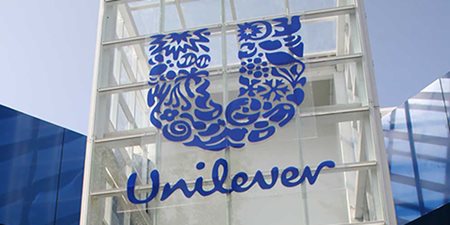Unilever Questions the Value of Social Media Influencers
By Laura Myers
July 12, 2018
#paid, B2C, Brand Safety, Branding, Business Intelligence, Influencer Marketing, Instagram, Marketing, Personal Brand, Unilever
In early June, Unilever took the stage at the annual Cannes Lions International Festival of Creativity to  put pressure on the influencer marketing industry to provide more transparency and stated as a result of their unfortunate experience with inflated reach and wasted ad dollars, they would no longer work with influencers who purchased followers. If you are at all unfamiliar with who Unilever is, they are the ‘brand behind the brand’ of such household names as Hellman’s, Lipton, Vaseline, Breyers and Dove to name just a small handful of their overall portfolio.
put pressure on the influencer marketing industry to provide more transparency and stated as a result of their unfortunate experience with inflated reach and wasted ad dollars, they would no longer work with influencers who purchased followers. If you are at all unfamiliar with who Unilever is, they are the ‘brand behind the brand’ of such household names as Hellman’s, Lipton, Vaseline, Breyers and Dove to name just a small handful of their overall portfolio.
While some may say this challenge might not phase the global influencer marketing industry set to be worth an estimated $10 billion by 2020, it has ignited a conversation amongst many established brands, creatives and general marketing thought-leaders in standing behind Unilever to say they too have been feeling the rapid ascent of influencer marketing and enticing projected revenues sounded a little too good to be true.
Unilever Wants Other Brands to Take Note
The driving force behind this move for Unilever is to prevent other brands from seeing their ad spend go down the drain when it's invested in influencers who have a high percentage of purchased followers, therefore falsifying the organic reach they use to determine their value. The unfortunate thing for the overall market of influencers who are authentic and deserving of prominent brand's ad spend, is Unilever and many subsequent brands who employ entire teams of people to monitor ROI of ad investment, are within their right to lift the veil.
It’s estimated that most mid-level influencers with an audience of between 50k to 100k have about 20% of fake followers. Another strike against them is the recent investigation by the New York Times into companies like Devumi, who has sold nearly 200 million automated accounts that represent fake followers on Twitter to a number of users. Information like this in the hands of some of the world’s largest advertisers, casts a large shadow over an industry that stands to shake up the traditional marketing model and offer a type of consumer engagement previously unseen.
In response, this week Twitter removed tens of millions of these suspicious accounts which will mean many of the influencers who have taken advantage of the revenue fake followers has allowed them may see a steep decline of their audience number. This comes nearly a year after Instagram made a move much the same.
There is Value in Influencers
In recent years the whole structure of how brands acquire customer attention and loyalty has changed and with it, who they employ to do it has followed suit. Steve Rubel captioned it best when he said: “First, there's been an inversion of influence. The traditional pyramid, where authority figures on top sway the masses, has been upended. Studies show influence has shifted away from institutions and it now travels primarily through peer individuals. Second, attention has flipped as well. It's no longer optimal for brands to just demand it. Attention now must also be earned. It's about relationships over reach.”
The influencer strategy is hinged on the peer phenomena. It may be smaller pockets of fans per individual but with their social influence comes higher engagement, trust and loyalty through a more personal connection they have with their following. Social media has created entirely digital friendships, and it only makes sense that those building these personal brands would want to optimize that trust, with commercial brands being more than happy to faciliate that given an adequate return.
While that enhanced trust is a big pro in favor of influencer marketing, the precarious nature of that trust can be a con. Influencers all become, in a way, the new micro brand ambassadors, so the trust followers have in influencers can be quickly compromised when they are promoting a product or service outside of what their perceived personal image or brand is comprised of. Secondly, companies advertising with them have to trust their own brand in the hands of influencers and risk them doing damage to the brand by association if their values don't align or there is a conflic in the proximity their campaign has to others the influencer is simultaneously running.
This all reminds me of the first widespread lesson rooted in my brain from when I was first learning the art of marketing, the importance of content, context and placement. Marketing teams need to ensure their influencer campaign is equipped with the right content for their message and platform, that the context is timely (such as consideration of current events, proximity to other campaigns and alignment with influencers' persona) and the placement is on the right social platform for a particular audience.
These are all underpinned by the biggest overall risk Mitch Fanning, VP of Marketing at Clickback explained in an interview: “Trust is non-transferable. You’re relying on someone who has actually built trust with their audience to recommend your product or service thinking that that trust will actually transfer to your product or service, and that’s just not the case, you can’t buy trust.”
Enter Influencer Marketing Technology
As influencer marketing gained traction on social media platforms, it was only a matter of time until  other forms of digital business technology joined in at pace to make the entire process run as efficiently and valuably as it could. Earlier in the year, I was able to speak with Adam Rivietz, the CEO of #paid, a platform that through the use of technology and business intelligence is able to provide relief for brands in ensuring their budgets spent on influencer marketing is returning the value they would hope.
other forms of digital business technology joined in at pace to make the entire process run as efficiently and valuably as it could. Earlier in the year, I was able to speak with Adam Rivietz, the CEO of #paid, a platform that through the use of technology and business intelligence is able to provide relief for brands in ensuring their budgets spent on influencer marketing is returning the value they would hope.
The way they accomplish this, is through the use of both artificial and genuine intelligence: “The second part of the technology is our matching algorithm, every campaign starts with a brief, an RFP per say from a client, we upload that brief to our platform and behind this brief template is what we love to call the campaign wizard. Behind this campaign wizard actually sits our matching algorithm so in real time it analyses the exact criteria that a brand or our sales team has input into the platform and will automatically in real time filter through our roster of 15,000 influencers in over 100 countries and short list a top 100 that match the criteria that was in the brief. Then the human element kicks back in, that shortlist of 100 is then sent to our creator relations team. They are the ones that vet and onboard all of our influencers and they are actually all influencers themselves as well so then they take this list of 100 and curate that to the top 20 or 30."
One reason Adam used to explain the allure of influencers is the fact that they are content creators first, and while the notion of someone outside of an organization creating representative content seems scary, it’s an increasing trend as the IDC predicts that “by 2020, more than 50% of a company’s commercial content will be created outside of marketing’s direct control”. That control however is something #paid gives back to the brand: “It’s actually our goal to make this as seamless and as close to a set it and forget it experience for our clients, we want it to be very turnkey. We know from executing campaigns for the last four years that it is very cumbersome and especially if you don’t have technology you have to keep track of all your influencers… the final touch point that they have is approving all the content, every photo, every video, every caption is shared with our clients before any post actually goes live, any content is sent back to the client.”
Ending Notes
While taking a stand against the use of influencers who purchase followers, Unilever is also hoping this will put pressure on the social media platforms who are allowing this behavior as they, the second largest advertiser in the world, vocalized they will be giving priority to “social media platforms that take action to stamp out fraud and increase transparency.”
The worst offence by the fake influencers in my opinion, coming a close second to taking ad dollars they don’t deserve from brands is the trust they are compromising that the real and valuable influencers have worked tirelessly to build and maintain. As Unilever’s Chief Marketing Officer Keith Weed recently stated in a comment to Reuters, “Trust comes on foot and leaves on horseback, and we could very quickly see the whole influencer space be undermined, There are lots of great influencers out there, but there are a few bad apples spoiling the barrel and the trouble is, everyone goes down once the trust is undermined.”

Laura Myers
A digital business, marketing and social media enthusiast, Laura thrives on asking unique, insightful questions to ignite conversation. At an event or remotely, she enjoys any opportunity to connect with like-minded people in the industry.